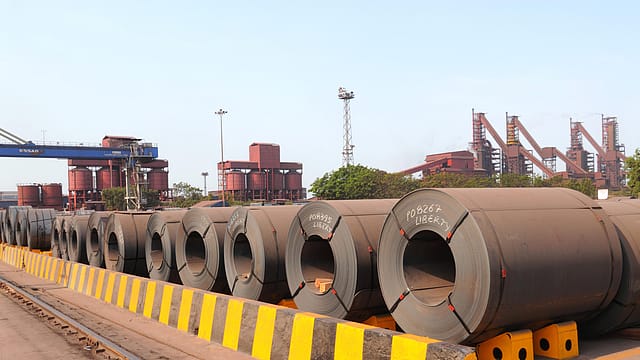IBC: The saviour of India’s distressed assets
ADVERTISEMENT

It has been a long and winding road for the historical Insolvency and Bankruptcy Code, 2016, which was supposed to India’s answer to the US Bankruptcy Act of 1978. It was supposed to provide promoters of bankrupt companies an easy exit route when they found the going tough for various reasons. Another important function was helping banks retrieve their exposure to bankrupt companies (with haircuts, of course). This was expected to restore the financial health of banks, which still have 9.6% of their loans as non-performing assets and 2% as stressed assets in their books.
However, over time, the limitations of the IBC became clear. Promoters used gaps in the Code to drag the legal process and prolong their hold. The 330-day limit for declaring bankruptcies was breached in many cases as cases continued to be fought in different courts. Moreover, in the absence of clear rules regarding the repayment of financial creditors, many cases got mired in various courts including the National Company Law Appellate Tribunal and high courts to decide on the amounts that should be available to various stakeholders.
Even the role and powers of the company of creditors (CoC) and resolution professionals was challenged in various courts. The law was applicable only for defaulting companies and not for non-banking financial companies (NBFCs), an important part of the Indian financial system.
The government has been thankfully alive to the challenges and made extensive amendments in the Act to ensure that it was in line with the developing situations.
January 2026
Netflix, which has been in India for a decade, has successfully struck a balance between high-class premium content and pricing that attracts a range of customers. Find out how the U.S. streaming giant evolved in India, plus an exclusive interview with CEO Ted Sarandos. Also read about the Best Investments for 2026, and how rising growth and easing inflation will come in handy for finance minister Nirmala Sitharaman as she prepares Budget 2026.
One of the major amendments in the Act came in July 2019, further streamlining the rules. One such was the strict adherence to the 330-day limit, with the government making it categorically clear that on Day 331, “the corporate debtor will go into liquidation”.
The amendment also gave the highest priority to those “who have brought interim finance to meet the costs of resolution or liquidation, followed by dues to workers for the past two years and dues to secured creditors in equal priority”. Unsecured creditors and operational creditors were further pushed down the line in the order of receiving resolution or liquidation proceeds. Home buyers too were given a voice in the deliberations of the bankruptcy plan of developers who had failed to deliver projects on time.
Yet, different interpretations by various courts and the NCLAT continued to create bottlenecks in the proper implementation of the Code. A case in point was the NCLAT’s judgement of July 19, 2019, that created a lot of doubts in the minds of the lenders in ArcelorMittal’s bid for Essar Steel. While approving the Rs 42,000-crore plan submitted by ArcelorMittal, the tribunal said that financial creditors would now get about Rs 30,030 crore, while operational creditors would get Rs 12,000 crore. It added that both classes of creditors would get 60.7% of their admitted claims.
Taken aback by the NCLAT’s decision of not distinguishing between secured and unsecured creditors, the lenders led by the State Bank of India moved the Supreme Court. In its appeal, the CoC said that the decision of the appellate tribunal has put the entire corporate insolvency resolution process of Essar Steel “under jeopardy” and that the judgment is “shocking, unsettling of otherwise settled principles of law recognising and protecting the rights of the secured creditors”. The NCLAT had also said that CoC was not empowered to decide how the distribution was to be made among creditors.
However, the Supreme Court in its November 16 judgement finally put an end to all confusion and controversies by declaring that the CoC will have a final say in the resolution plans under the IBC and that the NCLT and NCLAT cannot interfere with the commercial decisions taken by the CoC. As Mukesh Butani, managing partner, BMC Legal Advisors, points out: “The Supreme Court has once and for all clarified the difference between financial and operational creditors and made the financial creditors supreme.” However, the only issue is that the 330-day deadline has been made discretionary because the NCLT has the right to grant an extension, which can become a boon for nearly 535 companies that would have gone into liquidation by December, if the 330-day rule had continued, adds Bhutani.
More importantly, the IBC route can be used for the resolution of NBFCs, too. The government has paved the way for a new investor to infuse funds and acquire control of defaulting NBFCs if lenders are willing to accept haircuts on outstanding loans. The process will differ from bankrupt companies in the sense that it will be the Reserve Bank of India (RBI), the banking regulator, which will play a key role in moving the resolution process.
According to the government the RBI will not only appoint the administrator for the troubled NBFC, but also declare the acquiring company “fit and proper’’—whether it is capable of taking over the ailing NBFC. However, the approval of the resolution plan will be approved by the CoC. Again, as soon as the regulator files an application to initiate the resolution process, a moratorium will be in place so that there is no needless litigation and fresh claims. Moreover, promoters and parties connected to debt-saddled shadow banks have been barred from participating in the resolution process.
And if the IBC can bring about the resolution of debt-laden NBFCs, it can really become the saviour of the country’s distressed assets.
